Quick search
CTRL+K
Quick search
CTRL+K

Frankfurt is a modern city and a fascinating meeting between new and old at the same time. It has always been one of Germany’s richest city and a city with great political influence in Germany. It has been a locomotive of German economy and development for centuries as well, and there are so many things to see in both old and modern Frankfurt with all the high-rise office towers.
With its airport and large fairs, Frankfurt is a hub and meeting place for all of Europe and much of the world, and the international atmosphere of the modern city with its many fine museums and cultural offerings makes visiting here very exciting and with sights in and around the city center.
The distances in Frankfurt are not long. One minute you can walk between the old and idyllic half-timbered houses in the old town of Sachsenhausen, and the next moment you are surrounded by a large number of modern skyscrapers in the modern banking district. Römerberg is a good place to start strolling in Frankfurt. Here is the city’s old and attractive town hall, and churches and museums with the Kaiserdom and Städel as hightlights.
The region around Frankfurt is very beautiful with many lovely opportunities for seeing some amazing nature. The spa town of Wiesbaden and Gutenberg’s hometown of Mainz are not far away, and the drive in the Rhine river valley between Rüdesheim and Koblenz past the rocky Lorelei is unforgettably beautiful.
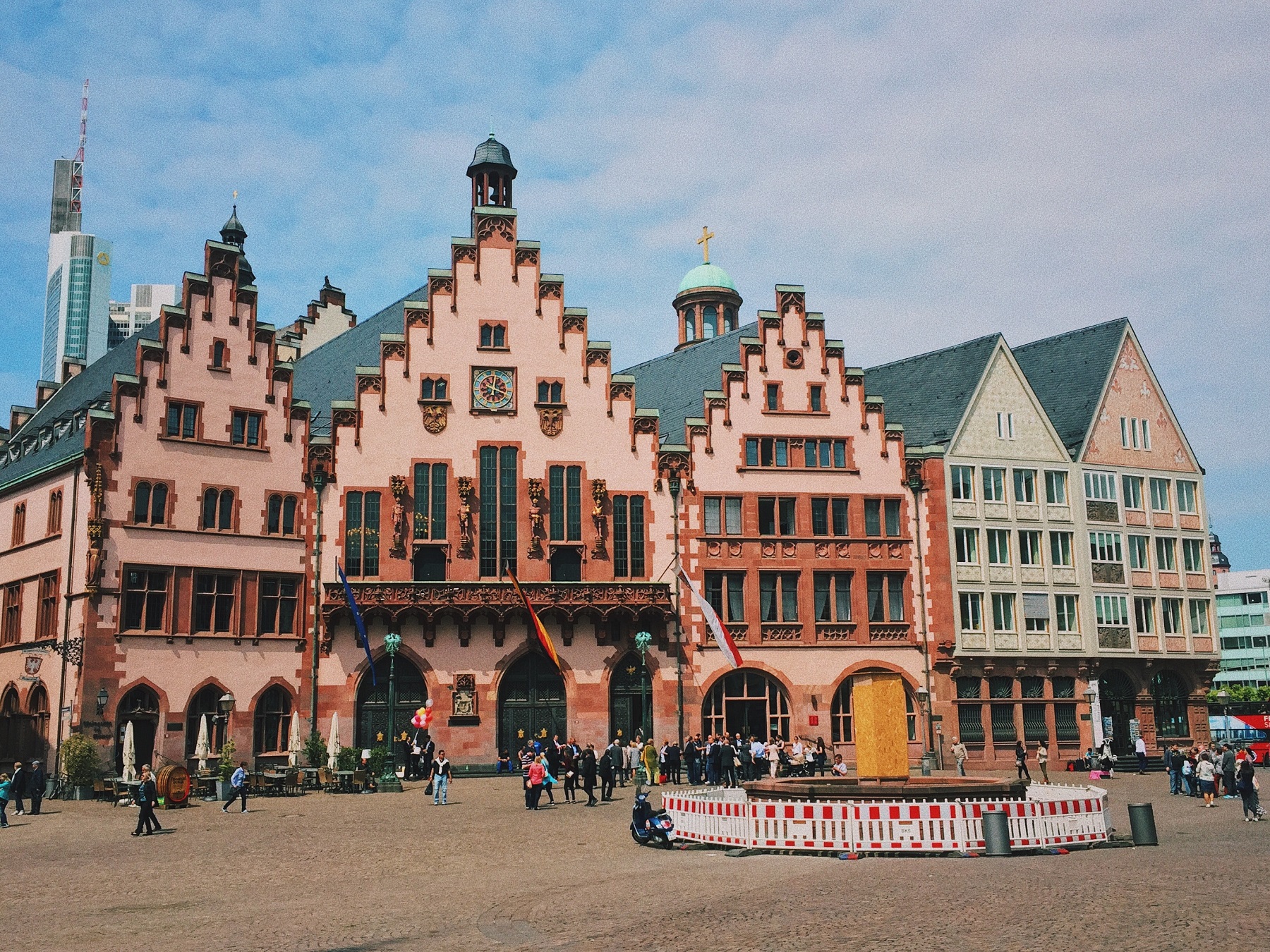
Römer is Frankfurt’s town hall, and this is a function the three-gabled house has had since 1405. At that time, the city government acquired the house from a merchant family named Römer. The building consisted of three connected houses with the names Alt-Limpurg, Römer and Löwenstein, and the complex is now one of the city’s landmarks under the name Römer. The place is still used by the city government for various purposes; for example, this is where worldly weddings are conducted.
Over the years, the town hall was expanded with several adjacent houses, and it was gradually a significant expansion compared to the three original houses. After the destruction of the center of Frankfurt on 22 March 1944, Alt-Limpurg, Römer and Löwenstein were rebuilt in an adapted original style, while Frauenstein and Salzhaus next to the central three houses were rebuilt in a greatly simplified manner.
In total, Römer today consists of nine connected houses with six courtyards. The facades of the three dominant gable houses are decorated with several interesting details. In Alt-Limburg you can see a statue of Frankfurtia, a female symbol of the city. At Römer you can see statues of four German-Roman emperors; Frederick Barbarossa, Louis IV, Charles IV and Maximilian II.
The best-known hall in Römer is the Imperial Hall/Kaisersaal, which was the place where the coronation banquets for the emperors of the German-Roman Empire were held from 1612. In the Kaisersaal you can see portraits of a total of 52 emperors of the empire. You can also experience the halls Römerhalle and Schwanenhalle, which are the oldest preserved rooms. The halls have largely been unchanged since the 15th century.
Frankfurt Cathedral, Kaiserdom St. Bartholomäus, is one of Germany’s great historic churches. Already around the year 680, the first Merovingian church building was erected on the site, and over the following centuries many extensions took place.
The start of the current Kaiserdom was a Gothic longhouse that was built in the period 1250-1269. From the beginning of the 14th century to the end of the 15th century, the church room itself was built, while the tower was only completed in 1514.
The large and ongoing building activity was due to the cathedral’s importance, which was emphasized in 1356, when it was designated as the election site for kings in the Holy Roman Empire. In the period 1562-1792, 10 imperial coronations were also carried out here. Despite the name, the church has never been a formal cathedral, but the name emphasizes its historical and religious importance in the German-Roman Empire.
Kaiserdom is dedicated to the apostle Bartholomäus, of whom a relic is kept in the church. The majestic, 95-metre high Gothic tower dominates the city centre, and at the Kaiserdom you can see some excavations of a former Roman settlement.
The church building itself has been destroyed several times in recent centuries. After a fire in 1867, the church had to be rebuilt, and the entire interior and part of the church’s exterior were destroyed during Allied bombing in 1944. The church had to be rebuilt again, which happened in the 1950s.
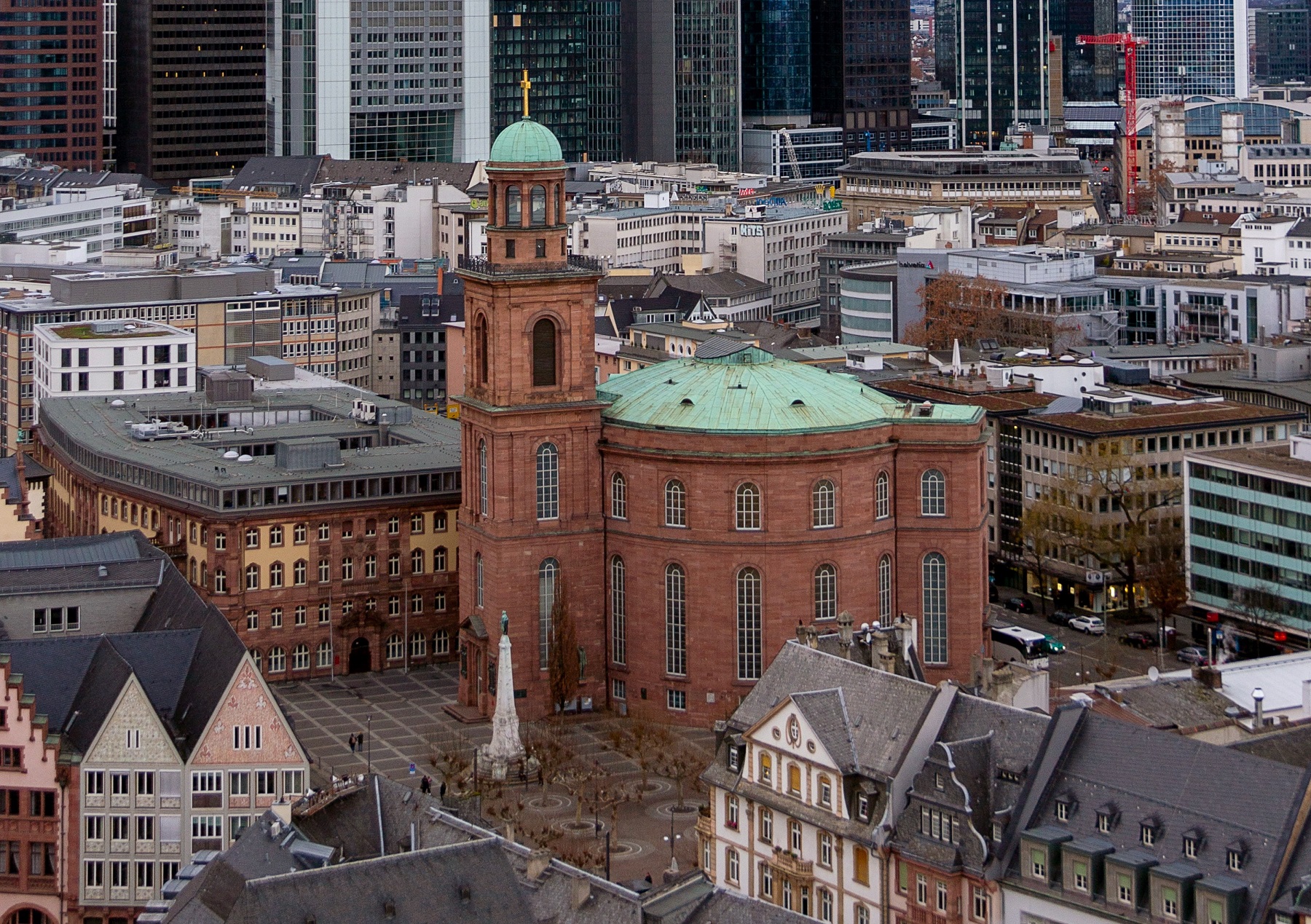
Paulskirche is one of the churches in Frankfurt that has entered the German history books. It happened in the 19th century, but already since the 13th century there had been a predecessor to the current church on this site; namely the monastery church Barfüßerkirche.
Paulskirche was built in the years 1789-1833, when the dedication took place. The long construction time was due to a long-term break due to the Napoleonic Wars and their aftermath. The church was built with an oval church space in classicist style, and the inspiration came not least from the Pantheon in Rome. The church was the city’s main Protestant church until the Allied bombing of Frankfurt in 1944.
However, there was an important event that took place in the Paulskirche in the 19th century. From 31 March to 3 April 1848, the church was the meeting place for the so-called Vorparlament, which prepared the elections for the first elected German national assembly. On 18 May of the same year, the first German parliament met, and they worked until 1849 to establish a common German constitution. However, this work did not come to fruition at the time due to opposition from both Prussia and Austria.
It was the Protestant layout of the church that made the Paulskirche good as a meeting place for the German Parliament. All churchgoers had to be able to see the priest at the same time, and the same applied to the political discussions. Due to the political-historical significance of the Paulskirche, the church was the first building that the Frankfurt city government rebuilt after World War II.
The church was rededicated on the centenary of the first session of Parliament in 1848. Since then, the Paulskirche has laid floors for several major events; J. F. Kennedy gave a speech here in 1963 and the church is home to the awarding of a peace prize.
The Goethe-Haus is the house where J.W. Goethe was born in 1749, and he also lived his first many years at this address. Among other things, Goethe wrote The Sorrows of Young Werther and the beginning of Faust during his time here in Frankfurt. Today, a museum has been set up in and near the house, where you can see many effects that collectively depict Goethe’s life, works and contemporaries.
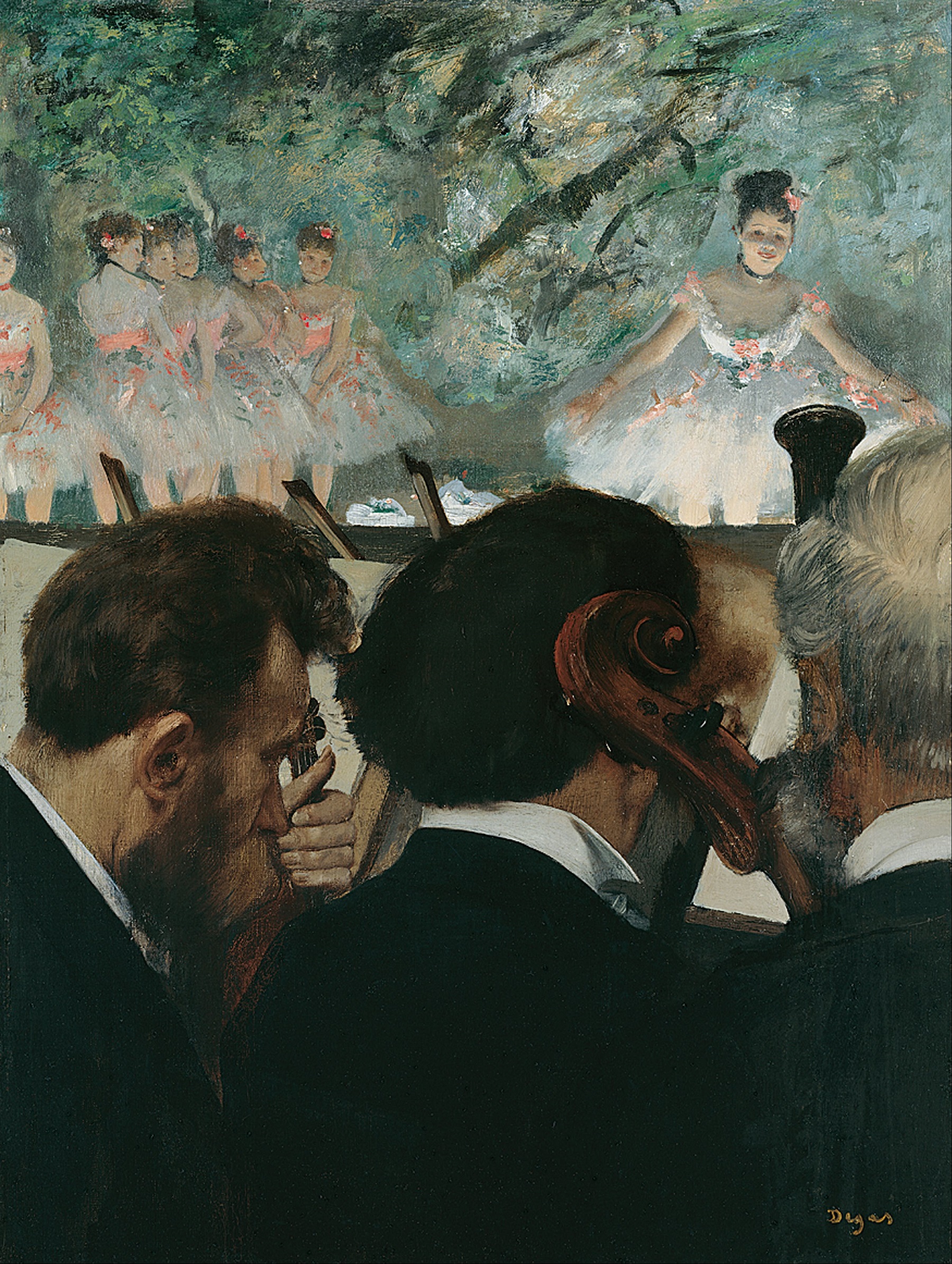
The Städel Museum is among Germany’s finest art museums. The collection contains European masterpieces from the 14th century to the 19th century. The museum thus spans many styles through the more than 100,000 works at its disposal. The collection includes paintings, drawings, sculptures and more.
Among other things, you can admire paintings by Van Eyck, Van Gogh, Picasso, Degas, Monet, Cézanne and Rembrandt. In its time, the collection was founded on the initiative of the banker and merchant Johann Friedrich Städel in 1815. In 1878, the current main building was built in the typical Gründerzeit style.
Sachsenhausen is the district that lies immediately south of the river Main close to the Alte Main-Brücke bridge. The place is known, among other things, for the delicious apple wine, Apfelwein, which you can drink in the neighborhood’s cozy old streets, which belong to Frankfurt’s most atmospheric entertainment districts. It is absolutely worth taking a walk through the cozy streets, which contrast with the modern skyline not far from here.
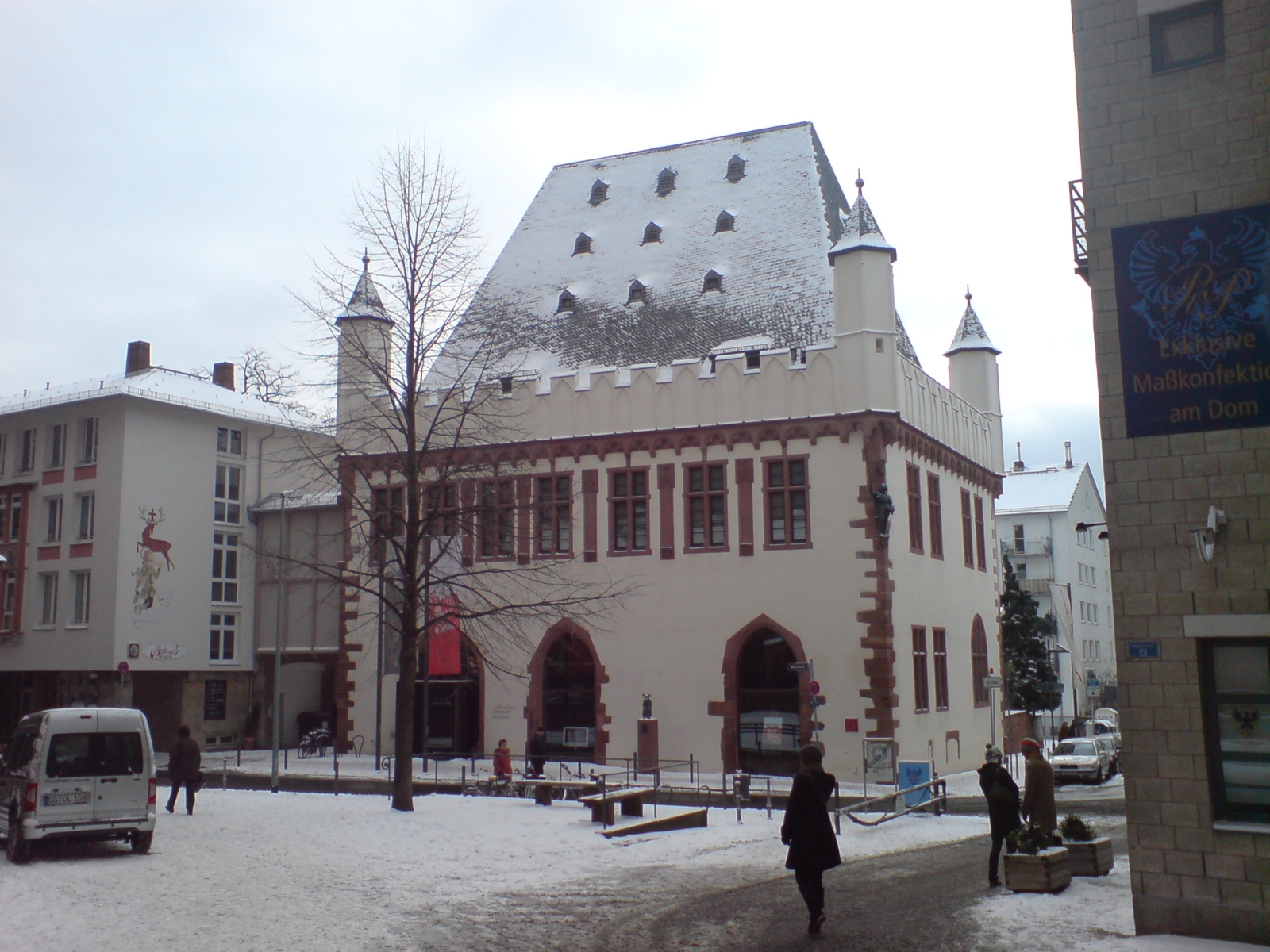
The remarkable Leinwandhaus is a late Gothic house, which was built in the years 1396-1399. The function of the house was customs clearance for all the linen that was traded at the Frankfurt fairs, and it also got its name after that.
Leinwandhaus has been used over time as, among other things, a warehouse, the barracks and the hospital, and it is partially rebuilt. The house, with its castle-like architecture, still exudes a special authenticity despite various changes. Today, a municipal gallery has been set up in the building.
The Alte Nikolaikirche is a church centrally located on Römerberg in the center of Frankfurt. It is believed to have been built as a small chapel already in the 11th century. In the 13th century, the first real church was built, and it happened around an old wooden chapel, which was demolished as it was completely enclosed by the new church.
After the Reformation in 1530, many years passed when the church was not used for its intended purposes. Only in 1721 was it consecrated again; this time as an evangelical church. During the 19th century in particular, the church was rebuilt a lot and therefore no longer has a medieval appearance.
In the Alte Nikolaikirche, major ceremonies such as coronations have been held over the centuries. On those occasions, the public had access to the church’s roof gallery. Historically, the church was also used by the city’s state council, which held meetings in the town hall, which was and still is in the Römer buildings opposite the church.
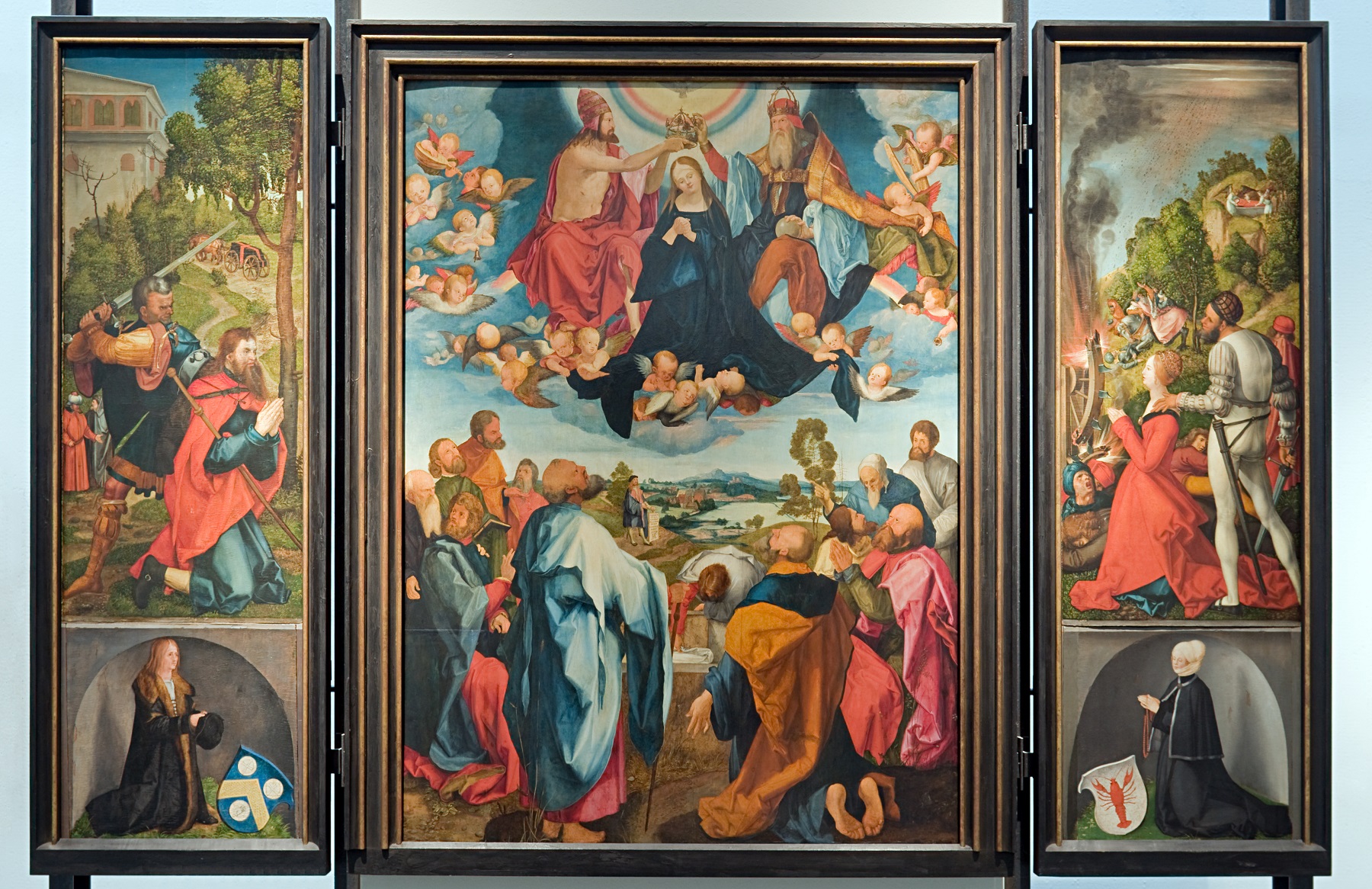
Historisches Museum Frankfurt is the city of Frankfurt’s city history museum. The site’s collection conveys the city’s history from the earliest settlements to the present day. The interesting museum simultaneously goes close to the everyday life of the citizens and depicts the area’s technical and industrial development as special themes.
Frankfurt’s Museum of Modern Art was built 1987-1991 according to the drawings of the Viennese architect Hans Hollein. The museum is called the Cake Piece/Tortenstück because of its triangular shape. The building’s interior is as abstract as its exterior, and here there are a multitude of different rooms and halls that form the framework for exciting changing exhibitions.
The museum was founded as an institution in 1981, and the core of the museum’s works was Karl Ströher’s collection of pop art and minimalism. Andy Warhol, Roy Lichtenstein and George Segal were among the artists represented in Ströher’s collection. More works have been added later, so that the exhibition also covers recent decades.
Frankfurt’s Carmelite monastery was founded in 1243, and it functioned as such until 1803. After its closure, there have been warehouses and barracks here, among other things. Today, the buildings are used for public offices and for an archaeological museum, the Archäologisches Museum.
Of interesting things you can see the museum, the monastery church in the monastery complex. The highlight of a visit is the preserved part of the so-called Ratgeb frescoes. The frescoes were painted by Jörg Ratgeb and originally filled 150 meters in length and 540 square meters. The frescoes were painted in the period 1515-1521.
At Frankfurt’s archaeological museum you can experience an exciting depiction of the history of the Rhein-Main region. In the exhibition, among other things, finds from the historic Roman city of Nida Franconovurt will be shown.
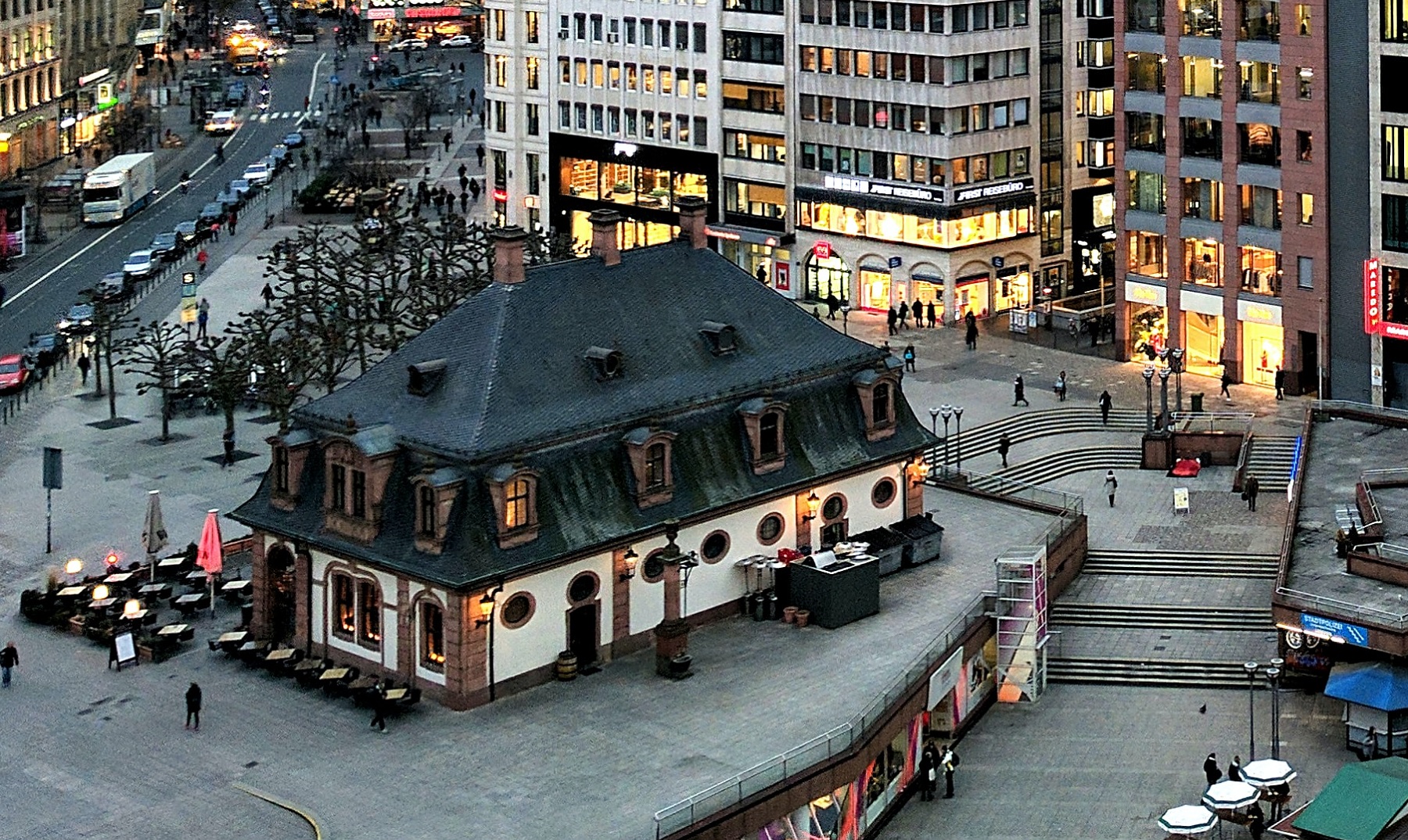
The Hauptwache is Frankfurt’s main guard building. It was built in 1671 and rebuilt in 1729-1730 to its current baroque appearance. For a time there was a prison in the building, which in 1904 was converted into a café.
The square at the Hauptwache is one of the city’s well-known and busy ones, and in the past it laid the ground for various military parades, which is why its former name was also Paradeplatz. It was called that until 1864.
Zeil is one of Frankfurt’s and all of Germany’s best-known shopping streets. The name Zeil comes from a piece of the current course of the street; here there used to be a row of buildings, which in German is called Zeile.
Since the end of the 19th century, large and beautiful buildings were built on Zeil, and the section between Hauptwache and Konstablerwache is laid out as a pedestrian street.
Until 1810, there was a city gate with the same name on the Eschenheimer Tor square. The gate, bastions and ramparts were demolished at that time, and only the gate tower Eschenheimer Turm remained standing. The spire-adorned tower was built in fortress style during the years 1400-1428, and the impressive work stands today as one of the city’s landmarks. Eschenheimer Turm is 47 meters high and it has 8 interior floors and two more levels in the central tower hat.
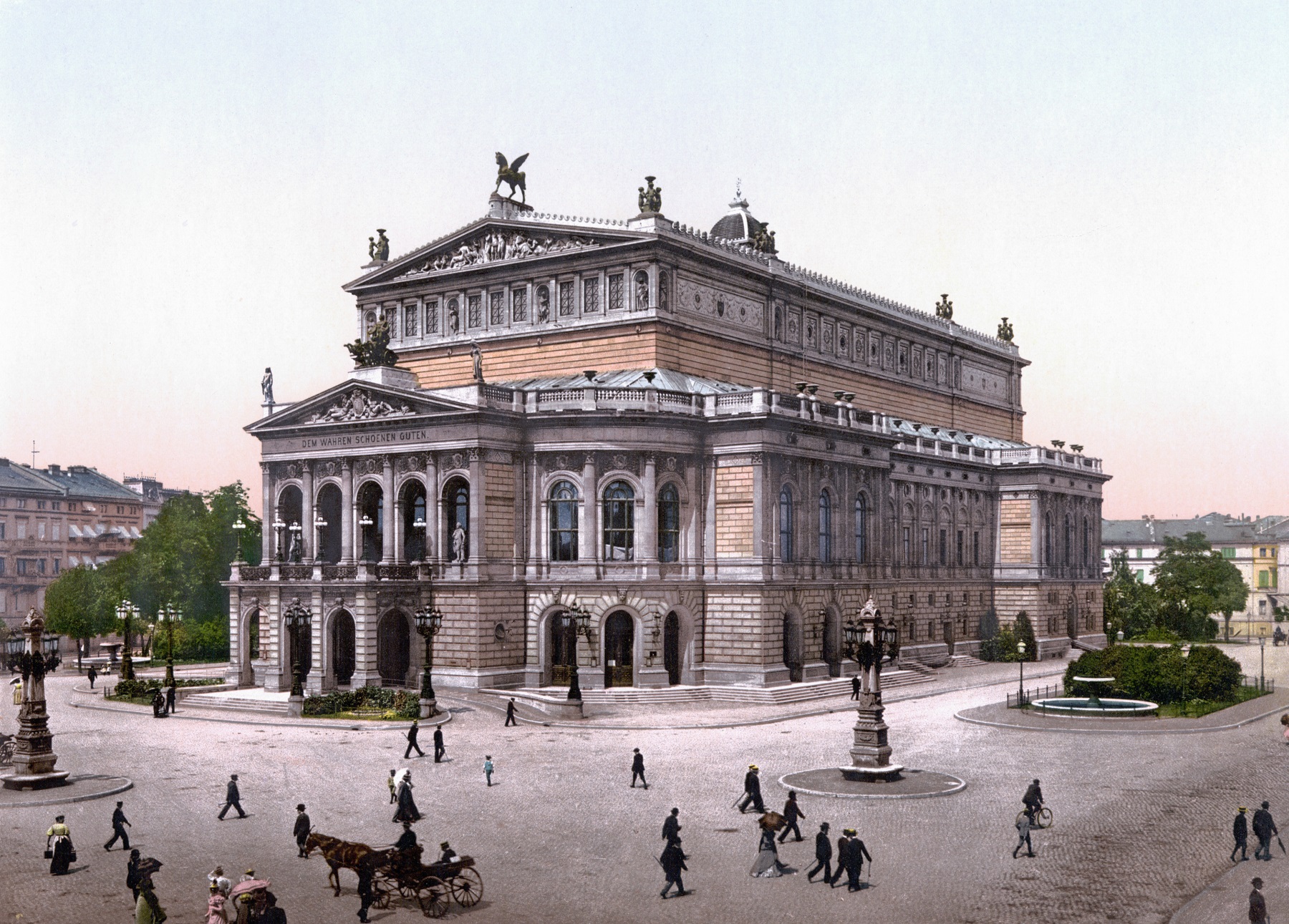
Frankfurt’s beautiful opera house was inaugurated in 1880, and its construction was partially aided through private donations. The opera house was totally destroyed during the Second World War, but since then the exterior of the building has been rebuilt according to the original drawings. The work was completed in 1981.
There are two halls in the opera; Großer Saal with approximately 2,500 spectators and Mozart-Saal which can accommodate 700 opera guests. The halls were newly decorated during the reconstruction and therefore do not have the original decorations.
The Jüdisches Museum depicts the life and history of Frankfurt’s Jewish population in the period from the 12th to the 20th century. At the museum, you can also continuously experience changing German and international exhibitions.
The museum buildings consist of two classicist bourgeois mansions, which were built by wealthy bourgeois families as residences. In 1928 they became the property of the city and could later be fitted out as a museum. The Jüdisches Museum was inaugurated by Chancellor Helmut Kohl in 1988 on the 50th anniversary of Kristallnacht.
A special part of the collection at the Jüdisches Museum are various effects from the Rothschild and Frank families. The Frank family is best known from Anne Frank, who through a diary described the time in hiding during World War II in Amsterdam. Anne Frank’s family moved from Frankfurt to the Netherlands in 1933.
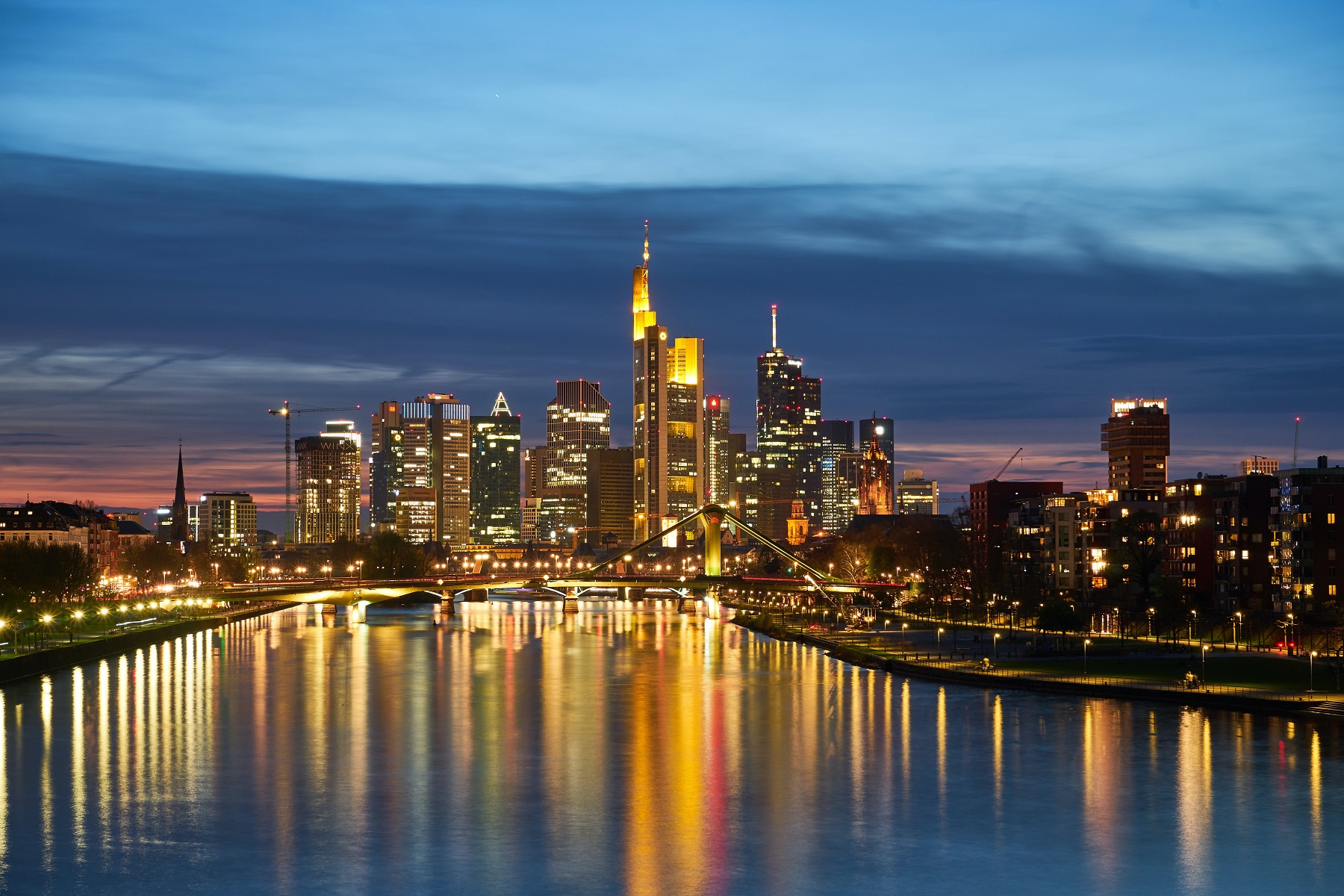
The Bankenviertel district is the core of the modern office landscape in Frankfurt, with its many characteristic glass and steel skyscrapers. The area is one of the only ones of its kind in Europe; of others, Paris’ La Defense and Moscow’s Moscow International Business Center are good examples.
Over the years, the Bankenviertel has been built along the western part of Frankfurt’s historic ramparts, from which there are many beautiful views of the Bankenviertel’s beautiful skyline.
The concentration of the many exciting and impressive buildings is along the streets Gallusanlage, Taunusanlage, Neue Mainzer Straße and Mainzer Landstraße. You can simply take a walk in the area between the skyscrapers, which include Eurotower, Commerzbank-Tower and Main Tower.
The skyscraper Main Tower was opened in 2000 and houses the Landsdelsbanken for Hesse and Thuringia. The building is 240 meters high with antennas, making it one of the tallest in Frankfurt.
The Main Tower was the first modern building with a public observation deck in Frankfurt. This is at an altitude of 200 metres, and from here there is a fantastic view over the Bankenviertel, Frankfurt city and the surrounding area. In total, there are 56 floors above street level and five floors below in the skyscraper.
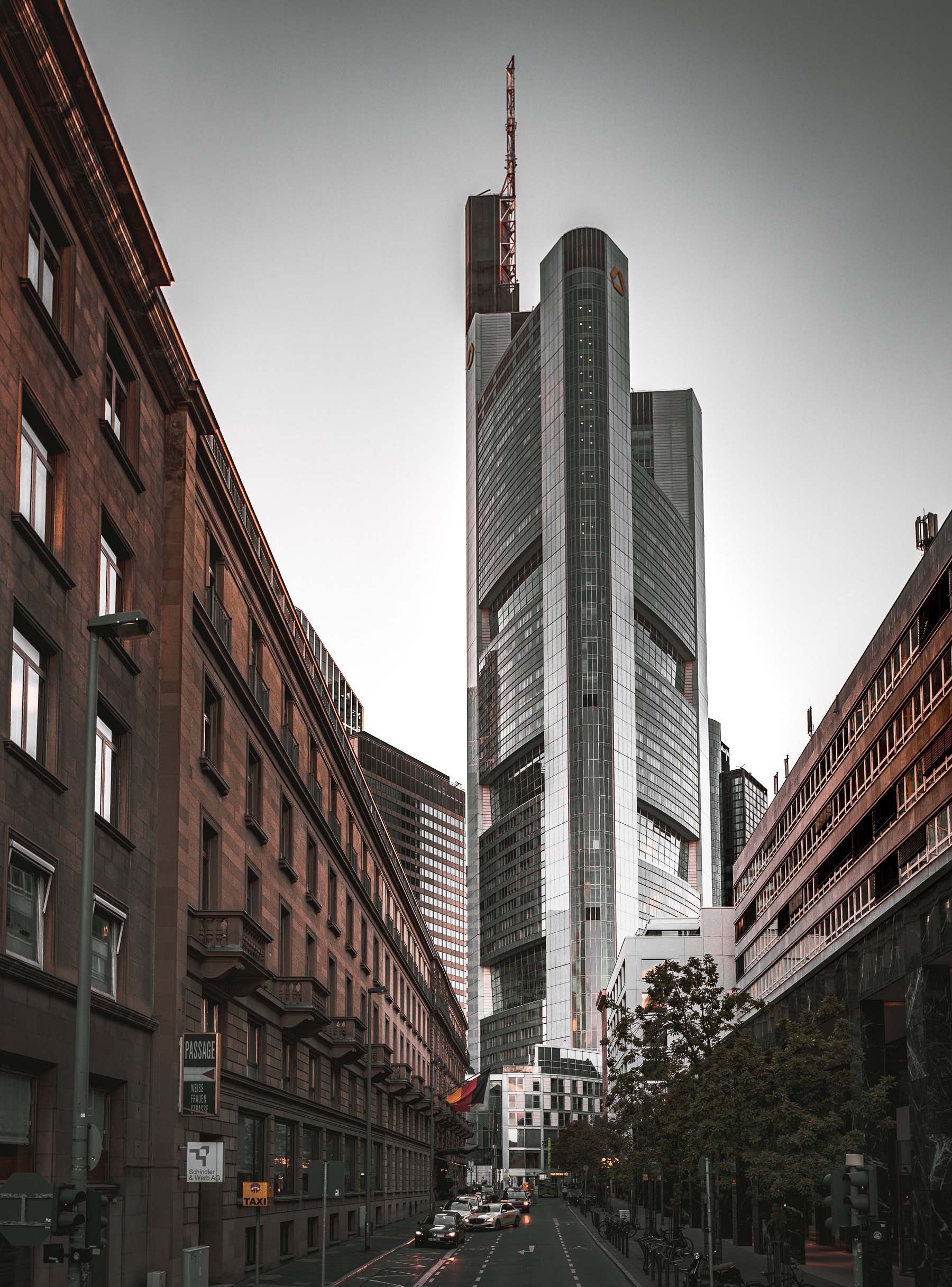
Commerzbank-Tower is a high-rise building that was built 1994-1997 as the headquarters of the German bank Commerzbank. It was architect Sir Norman Foster who designed the building, which was inaugurated as Europe’s tallest building excluding towers. The house had that status until 2003, when the Triumphal Palace in Moscow was opened with a height of 264 meters.
The Commerzbank Tower itself is 259 meters high, but with antennas it measures a full 300 meters. The base plane is an equilateral triangle with sides 60 meters wide. There are integrated garden landscapes on the upper floors, which help make the building an exciting architectural experience.
This large natural history museum has a very interesting collection and is, after Berlin’s, the largest in Germany. One of the museum’s many highlights is the large dinosaur collection with several dinosaur skeletons on display.
The museum building was built in the years 1904-1907, and in connection with the opening, the American Museum of Natural History donated a diplodocus, which is still among the museum’s effects. In addition to the many dinosaurs, you can experience all the other eras of the Earth through natural history.
The Palmengarten is a botanical garden in Frankfurt. The facility was established with private funds and opened for the first time in 1871. The city government took over the garden in 1931, and from the end of World War II until the 1960s, the American military was stationed here. In 1992, the Palmengarten opened in a new and reconstructed form.
The name Palmengarten comes from the interesting greenhouses that house tropical and subtropical plants. In the Palmengarten you can also try a trip with the miniature railway Palmen-Express, which has run trips here in the summer since 1972.
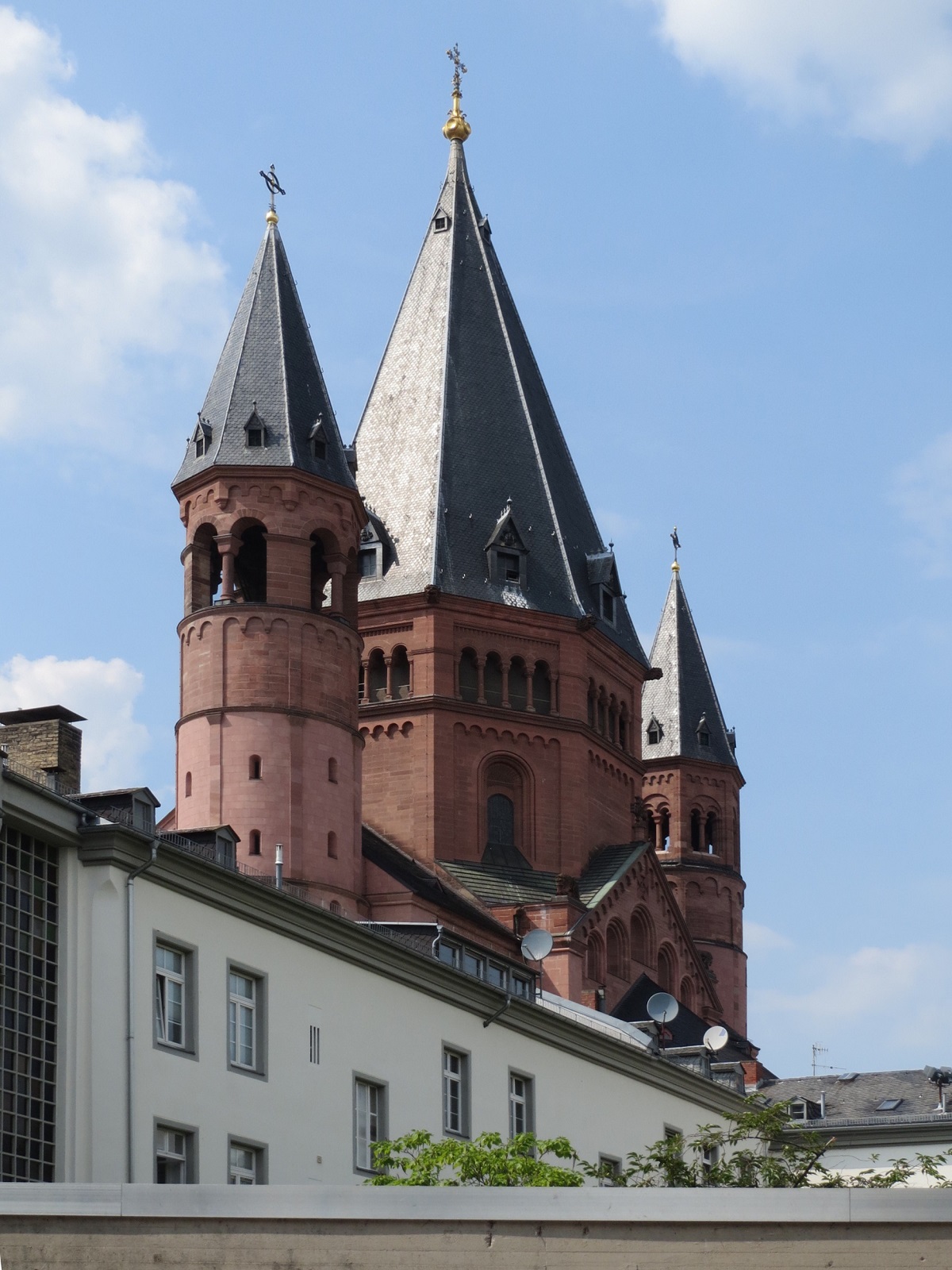
Mainz is the capital of the state of Rhineland-Palatinate and is located at the point where the river Main flows into the Rhine. The city’s history goes back to the Roman foundation of a fort in the first century AD, and the place was the capital of the province of Germania Superior. Mainz later became one of the most important cities of the Holy Roman Empire, and it continued to be a strong German fortress in the defense of the west.
Mainz was subjected to massive bombardments during World War II and the area’s French administration wanted to rebuild a model city inspired by Le Corbusier’s urban planning, which was only partially realized with the interesting mix of new and old that you can see in the center of Mainz today. A fine example of modern architecture is Arne Jacobsen’s town hall building on the banks of the Rhine, while you can see old Mainz with half-timbered houses in the quarter south of the cathedral.

Wiesbaden is the capital of the state of Hesse and, after Frankfurt, it is the state’s largest city. Wiesbaden is also an ancient city, founded by the Romans in AD 6. Beautifully situated between the Rhine river and the Taunus Mountains, the city is famous for its hot springs, which the Romans used extensively and which can still be enjoyed in several places today.
There are many sights in Wiesbaden, and you can start at Schloßplatz, which is surrounded by interesting buildings. The neoclassical city castle from the first half of the 19th century is today used as Hesse’s state house. The castle complex also includes the Kavaliershaus and the Wilhelmsbau next to the castle. Wiesbaden’s Old Town Hall and New Town Hall from 1887 and the Protestant Marktkirche are opposite the castle and are all worth seeing as well.
In the Wiesbaden suburb of Biebrich, the castle of the same name is located at the end of a lovely castle park down towards the river Rhine. The castle was built as a residence by the ducal family of Nassau. In 1701 it had started as a smaller house, which over the following decades was made into the magnificent baroque castle that you can see now. The castle is owned by the state of Hesse and is used today mainly for various administrative purposes.
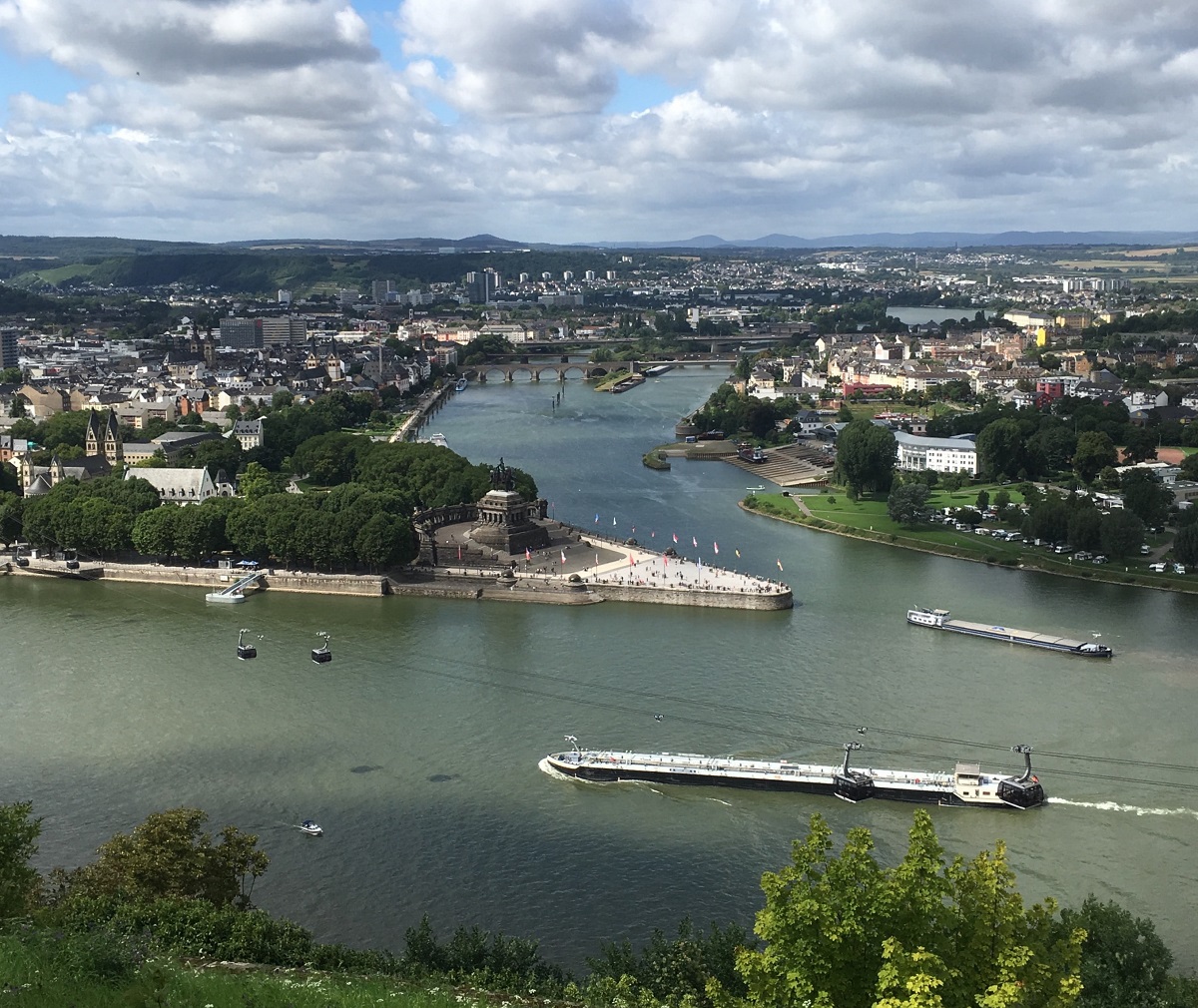
Koblenz is a city located in the state of Rhineland-Palatinate at the point where the river Mosel flows into the Rhine. The city’s history goes back to the years before the birth of Christ, when the Romans founded a military settlement in the strategically good place. Koblenz’s name comes from the Latin name confluentes, meaning confluence, which alludes to the two great rivers.
The most famous place in Koblenz is the Deutsches Eck, which is the place where the Mosel flows into the Rhine. Deutsches Eck is a large square where you can go all the way to the rivers and enjoy the beautiful scenery that is here. In the square you can see Koblenz’s famous equestrian statue of Emperor Wilhelm I. The statue was erected in 1897 as a monument to the emperor’s role in the German unification in 1871.
One of the most beautiful parts of the river Rhine is the stretch between Rüdesheim and Koblenz, which is a unique natural experience with many historical sights along the way.
The medieval castles lie like a string of pearls on top of the ridge that stretches all the way along the meandering course of the river. One breathtaking view and idyllic town replaces the other, regardless of which side of the river you choose to drive along.
The trip to the top of the rock Lorelei at Sankt Goarshausen is a must for most. Here it is said that the sirens sing and lead the river captains astray. From the 132 meter high mountain top, you can see how demanding the Lorelei mountain is for the many river boats to steer past. The meandering part of the river is at its narrowest at 113 metres, while the depth is up to 25 metres. There are also trains throughout the trip, and it is a very nice drive where you can consider getting off at a place or two.
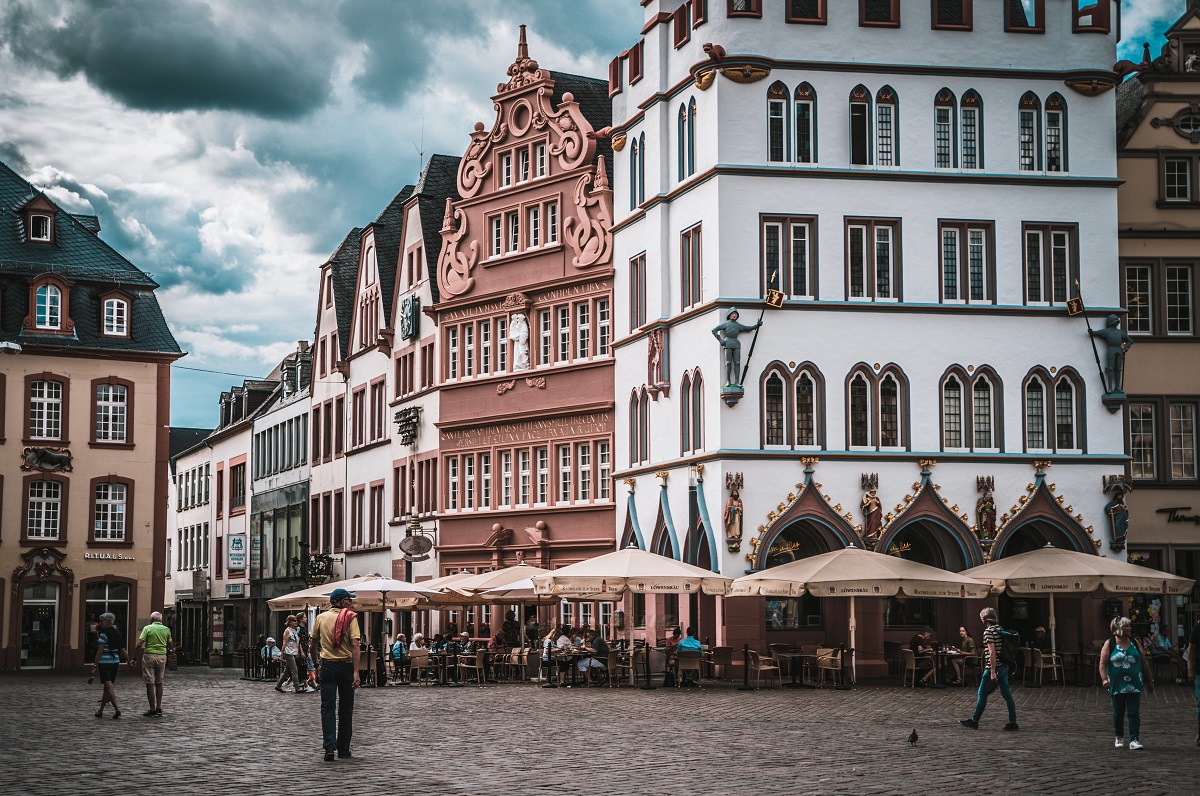
Trier is known as Germany’s oldest city. It was founded by Celts in the 4th century BC. on the banks of the Moselle, and later it was conquered by the Romans, who named it Augusta Treverorum. Trier was also an important city in the later German-Roman Empire, and today there are several monuments and buildings in the city that have been included in UNESCO’s World Heritage List.
Trier is one of the large cities in the state of Rhineland-Palatinate, and there are many attractions in the cozy city center. From the Roman era you can see the impressive gate building Porta Nigra, probably the most famous of its time. The construction of the large city gate started around the year 170, and over time a church was built here. Napoleon returned the Porta Nigra to a Roman construction, and it is the largest Roman city gate north of the Alps.
Zeil 116-126
galeria-kaufhof.de
Zeil 90
karstadt.de
Sulzbach
main-taunus-zentrum.de
Zeil 106
myzeil.de
Limescorso 8
nwz-frankfurt.de
Zeil 71-75
peekundcloppenburg.de
Zeil 112-114
zeilgalerie.de
Zeil, Liebfrauenstraße, Steinweg, Goethestraße, Schillestraße, Berger Straße
Frankfurt Zoo
Alfred-Brehm-Platz 16
zoo-frankfurt.de
Holiday Park
Hassloch, 100 km/60 mi S
holidaypark.de
Taunus Wunderland
Schlangenbad, 50 km/30 mi W
taunuswunderland.de
Frankfurt is known to be inhabited from Roman times, when the road between Moguntisacum and Nida cut through the Main Valley. The city originated in the present Old Town, where a hill between Main’s river arms provided natural protection against any enemies.
The Romans are believed to have settled on the hill in the century BC, and since then several traces of their presence have been found. From the first centuries, there are remnants of Roman baths, which of course were associated with defense works. The military position was changed in the 200’s to, among other things, a villa with several farms.
The Roman history of Frankfurt ended in the years 259-260 when the Roman Empire’s border in the area was moved to the western bank of the Rhine.
In the centuries following the Roman retreat, little is known about the history of Frankfurt, which is once again known from 793. Here the city was mentioned in writing, which was repeated the following year.
794 was also the year in which Emperor Charlemagne made Frankfurt one of its residential towns. The emperor called the city of Franconovurd, which meant the fort of the Franks, and it immediately became the center of an ecclesiastical meeting among bishops from all over France, Italy, Aquitania and England. Pope Adrian I was also represented at the meeting.
After Charlemagne’s time, Ludwig came to the throne, and he chose Frankfurt as his residence city. Ludwig expanded Frankfurt with a larger palace from 828, and he expanded the city’s fortifications so that in 838 it was surrounded by defense works.
In 843, Frankfurt became the official capital of the Eastern Franc, which naturally gave rise to new activity and growth. Kings and emperors were often in the city, which was also the center of many important meetings. The Emperor of France no longer had a permanent residence, but Frankfurt maintained its imperial importance.
After a time of decline in the importance of the city, Frankfurt again became the center of significant events in the 12th century. In a local church, Bernhard of Clairvaux initiated part of the Second Crusade, and he called King Konrad III of Hohenstaufen. This happened in 1147, when Konrad appointed his ten-year-old son as heir before the voyage. However, the son died before the father, and thus a new king was to be found.
Frederick Barbarossa was elected as the new king in 1152, and then Frankfurt became the hometown of ceremonies for coronations by German rulers; it was Frederick Barbarossa who instituted this tradition at his own coronation in the city.
Throughout the 12th century, Frankfurt developed significantly. The city had been a hub of trade since the Roman times, and Frankfurt’s trade fairs and markets had become so well-known and important that merchants from large parts of Europe came to them.
Frankfurt was a free city under the Hohenstaufen emperors, and its significant economic growth brought new rights for citizens. The citizens, for example, chose their own mayors and officials and thus had a great influence on the administration of Frankfurt.
Frankfurt continued to develop rapidly after the 1100s, and it had become one of the most important German cities, not least due to extensive trade. Frederick II guaranteed the safety of transit through Frankfurt in 1240, providing further growth for the major trade fairs and general trade. Frankfurt was at that time the economic locomotive in the German area.
In 1356, after a while Frankfurt became the site of coronations by German kings. However, the city established its own city state 16 years later, and it was Freie Reichstadt Frankfurt. The formation of the city-state could be done after Frankfurt bought himself free of Karl IV. In this way, a high degree of autonomy prevailed, although the city was formally still subject to the emperor himself.
In 1405, the city council bought the two buildings that still today act as Frankfurt’s city hall. In the same century, the Jewish quarter of the city was built, and the supreme imperial court was founded in the city during this time. Frankfurt was not only a trading town, but also home to important institutions and traditions.
At the beginning of the 16th century, the Reformation was gradually introduced. However, it first became official in Frankfurt in 1533, when public practice of the Catholic faith was banned at the same time for a period of 15 years.
In 1585, Frankfurt’s financial stock exchange was established, and for the first time, the city came to decide on currency and financial resources. Frankfurt’s wealth at that time far exceeded that of most other German cities, and trade, arts and industry flourished.
The letterpress art had been established in nearby Mainz, and it got infected in Frankfurt, where knowledge and education became a priority. In addition, the most important book fair in Germany was held in Frankfurt for several centuries.
Over time, Frankfurt has been repeatedly occupied. In the years 1631-1635 Swedish troops came to the area in connection with the 30-year war, where Frankfurt otherwise maintained neutrality. The Swedish king Gustav Adolf demanded shelter and supplies for the Swedish troops, and the city was through diplomacy.
Frankfurt became imperial residence in the German-Roman Empire 1742-1745 when Karl VII moved his court to this. A few years later, in 1749, one of the city’s great sons was born; Johann Wolfgang von Goethe, whose works later became world famous.
The city was constantly evolving, but it was also a time of several French occupations. During the Seven Years’ War, France conquered the city in the years 1759-1763, and only a few decades later French forces returned during the Napoleonic Wars.
In 1792, the last imperial coronation took place in Frankfurt. It was Franz II’s inauguration ceremony in the city, which at that time housed 35,000 inhabitants. That same year, Frankfurt was occupied by French troops from October to December.
A few years later, the city could develop further geographically, as old defenses were eroded and converted into parks in 1804, but the time as a sanctuary did not last long afterwards. In 1806, the German-Roman Empire fell, and Frankfurt was again occupied by France, which ended the city’s status by granting it to Karl Theodor Anton Maria von Dalberg, who ruled it until 1810, when Frankfurt was made Grand Duchy.
After Napoleon’s fall, the German territory was divided into more than 30 urban states and smaller rural areas. Frankfurt in 1816 became the seat of the German Reichstag under the German Confederation, while the city itself had been confirmed its status as a free city at the Vienna Congress.
1848 became a landmark for Frankfurt and for the German states. This year, a number of people met in Frankfurt’s Paul Church on May 18. It was the first free parliamentary session in Germany, and it was to be the start of the later German democratization process.
Frankfurt was the center of political life for the many German states, but there was also an uproar among the city’s inhabitants. Throughout 1848, the burgeoning revolutions were knocked down several times, and it was not least in the Sachsenhausen neighborhood, it smoldered.
The 19th century was also other than politics. Economically, the city was developed through industry, commerce and transportation. The first railroad opened in 1839, and many new projects saw the light of day. For example, the railways were expanded, a zoo established, and the Frankfurter Zeitung starts in the following decades when Frankfurt grew to a population of 71,000 in 1861.
In 1863, a series of political meetings for closer German unity began in Frankfurt. It came to reforms that made it possible to approximate one another among the German states, but as Prussia did not support the reforms, the project declined. In 1866, instead, the Prussian-Austrian war broke out, with the states fighting for power in the German Confederation. Prussia won over Austria and occupied Frankfurt, which was made part of the province of Hessen-Nassau, which served as a province until 1918.
In the first decades of the 20th century, several institutions were established in Frankfurt, such as the Museum der Weltkulturen in 1904 and the city’s university ten years later. The same year as the university’s founding, World War I broke out, which ended the German empire. Germany became a republic after the war, and Frankfurt was naturally part of it.
In time, more than 400,000 people lived in Frankfurt, which continued to evolve. Large facilities such as the new Frankfurt Airport and the industrial giant IG Farben’s headquarters were established in 1926 and 1931 respectively.
At the Nazi takeover of the country in 1933, changes immediately occurred in Frankfurt. The city’s Jewish mayor was replaced by NSDAP member Friedrich Krebs, who was in office until 1945. Five years later, most of Frankfurt’s synagogues were destroyed during the Crystal Night, and eventually World War II drew near.
During World War II, Frankfurt was subject to severe fighting and countless aerial bombardments, which destroyed 80% of the city. The area’s most important trade and industry had been wiped out, and a colossal reconstruction was underway after the end of the war in 1945.
The new Germany in the 1940s became two states; West Germany and East Germany. The former free city of Frankfurt became part of the state of Hesse, whose capital was Wiesbaden. Instead, Frankfurt was a candidate to become the West German capital, but after close polls Bonn gained this status.
In the years that followed, Frankfurt became one of the symbols of the German Wirtschaftswunder, which was the term for the explosive economic development. Modern neighborhoods and financial institutions shot up in the city, whose skyline with the many glass and steel skyscrapers became unique in Europe through the latter half of the 20th century.
At the same time, a reconstruction of Frankfurt’s Old Town around Römerberg was completed, where you can experience the atmosphere of earlier centuries. It was decided to save the street network from before the Second World War to build on old and traditional Frankfurt. Together with Hamburg and Munich, Frankfurt became the leader in West Germany, and the city’s airport grew into one of the largest in the world.
Today, Frankfurt is one of the continent’s most international cities, and it is the financial center for not only Germany, but for transactions in large parts of the world.
 Frankfurt, Germany[/caption]
Frankfurt, Germany[/caption]
Overview of Frankfurt
Frankfurt is a modern city and a fascinating meeting between new and old at the same time. It has always been one of Germany’s richest city and a city with great political influence in Germany. It has been a locomotive of German economy and development for centuries as well, and there are so many things to see in both old and modern Frankfurt with all the high-rise office towers.
With its airport and large fairs, Frankfurt is a hub and meeting place for all of Europe and much of the world, and the international atmosphere of the modern city with its many fine museums and cultural offerings makes visiting here very exciting and with sights in and around the city center.
The distances in Frankfurt are not long. One minute you can walk between the old and idyllic half-timbered houses in the old town of Sachsenhausen, and the next moment you are surrounded by a large number of modern skyscrapers in the modern banking district. Römerberg is a good place to start strolling in Frankfurt. Here is the city’s old and attractive town hall, and churches and museums with the Kaiserdom and Städel as hightlights.
About the Whitehorse travel guide
Contents: Tours in the city + tours in the surrounding area
Published: Released soon
Author: Stig Albeck
Publisher: Vamados.com
Language: English
About the travel guide
The Whitehorse travel guide gives you an overview of the sights and activities of the Canadian city. Read about top sights and other sights, and get a tour guide with tour suggestions and detailed descriptions of all the city’s most important churches, monuments, mansions, museums, etc.
Whitehorse is waiting for you, and at vamados.com you can also find cheap flights and great deals on hotels for your trip. You just select your travel dates and then you get flight and accommodation suggestions in and around the city.
Read more about Whitehorse and Canada
Canada Travel Guide: https://vamados.com/canada
City tourism: https://visitwhite-horse.ca
Main Page: https://www.vamados.com/
Buy the travel guide
Click the “Add to Cart” button to purchase the travel guide. After that you will come to the payment, where you enter the purchase and payment information. Upon payment of the travel guide, you will immediately receive a receipt with a link to download your purchase. You can download the travel guide immediately or use the download link in the email later.
Use the travel guide
When you buy the travel guide to Whitehorse you get the book online so you can have it on your phone, tablet or computer – and of course you can choose to print it. Use the maps and tour suggestions and you will have a good and content-rich journey.


The remarkable Leinwandhaus is a late Gothic house, which was built in the years 1396-1399. The function of the house was customs clearance for all the linen that was traded at the Frankfurt fairs, and it also got its name after that.
Leinwandhaus has been used over time as, among other things, a warehouse, the barracks and the hospital, and it is partially rebuilt. The house, with its castle-like architecture, still exudes a special authenticity despite various changes. Today, a municipal gallery has been set up in the building.
The Alte Nikolaikirche is a church centrally located on Römerberg in the center of Frankfurt. It is believed to have been built as a small chapel already in the 11th century. In the 13th century, the first real church was built, and it happened around an old wooden chapel, which was demolished as it was completely enclosed by the new church.
After the Reformation in 1530, many years passed when the church was not used for its intended purposes. Only in 1721 was it consecrated again; this time as an evangelical church. During the 19th century in particular, the church was rebuilt a lot and therefore no longer has a medieval appearance.
In the Alte Nikolaikirche, major ceremonies such as coronations have been held over the centuries. On those occasions, the public had access to the church’s roof gallery. Historically, the church was also used by the city’s state council, which held meetings in the town hall, which was and still is in the Römer buildings opposite the church.

Historisches Museum Frankfurt is the city of Frankfurt’s city history museum. The site’s collection conveys the city’s history from the earliest settlements to the present day. The interesting museum simultaneously goes close to the everyday life of the citizens and depicts the area’s technical and industrial development as special themes.
Frankfurt’s Museum of Modern Art was built 1987-1991 according to the drawings of the Viennese architect Hans Hollein. The museum is called the Cake Piece/Tortenstück because of its triangular shape. The building’s interior is as abstract as its exterior, and here there are a multitude of different rooms and halls that form the framework for exciting changing exhibitions.
The museum was founded as an institution in 1981, and the core of the museum’s works was Karl Ströher’s collection of pop art and minimalism. Andy Warhol, Roy Lichtenstein and George Segal were among the artists represented in Ströher’s collection. More works have been added later, so that the exhibition also covers recent decades.
Frankfurt’s Carmelite monastery was founded in 1243, and it functioned as such until 1803. After its closure, there have been warehouses and barracks here, among other things. Today, the buildings are used for public offices and for an archaeological museum, the Archäologisches Museum.
Of interesting things you can see the museum, the monastery church in the monastery complex. The highlight of a visit is the preserved part of the so-called Ratgeb frescoes. The frescoes were painted by Jörg Ratgeb and originally filled 150 meters in length and 540 square meters. The frescoes were painted in the period 1515-1521.
At Frankfurt’s archaeological museum you can experience an exciting depiction of the history of the Rhein-Main region. In the exhibition, among other things, finds from the historic Roman city of Nida Franconovurt will be shown.

The Hauptwache is Frankfurt’s main guard building. It was built in 1671 and rebuilt in 1729-1730 to its current baroque appearance. For a time there was a prison in the building, which in 1904 was converted into a café.
The square at the Hauptwache is one of the city’s well-known and busy ones, and in the past it laid the ground for various military parades, which is why its former name was also Paradeplatz. It was called that until 1864.
Zeil is one of Frankfurt’s and all of Germany’s best-known shopping streets. The name Zeil comes from a piece of the current course of the street; here there used to be a row of buildings, which in German is called Zeile.
Since the end of the 19th century, large and beautiful buildings were built on Zeil, and the section between Hauptwache and Konstablerwache is laid out as a pedestrian street.
Until 1810, there was a city gate with the same name on the Eschenheimer Tor square. The gate, bastions and ramparts were demolished at that time, and only the gate tower Eschenheimer Turm remained standing. The spire-adorned tower was built in fortress style during the years 1400-1428, and the impressive work stands today as one of the city’s landmarks. Eschenheimer Turm is 47 meters high and it has 8 interior floors and two more levels in the central tower hat.

Frankfurt’s beautiful opera house was inaugurated in 1880, and its construction was partially aided through private donations. The opera house was totally destroyed during the Second World War, but since then the exterior of the building has been rebuilt according to the original drawings. The work was completed in 1981.
There are two halls in the opera; Großer Saal with approximately 2,500 spectators and Mozart-Saal which can accommodate 700 opera guests. The halls were newly decorated during the reconstruction and therefore do not have the original decorations.
The Jüdisches Museum depicts the life and history of Frankfurt’s Jewish population in the period from the 12th to the 20th century. At the museum, you can also continuously experience changing German and international exhibitions.
The museum buildings consist of two classicist bourgeois mansions, which were built by wealthy bourgeois families as residences. In 1928 they became the property of the city and could later be fitted out as a museum. The Jüdisches Museum was inaugurated by Chancellor Helmut Kohl in 1988 on the 50th anniversary of Kristallnacht.
A special part of the collection at the Jüdisches Museum are various effects from the Rothschild and Frank families. The Frank family is best known from Anne Frank, who through a diary described the time in hiding during World War II in Amsterdam. Anne Frank’s family moved from Frankfurt to the Netherlands in 1933.

The Bankenviertel district is the core of the modern office landscape in Frankfurt, with its many characteristic glass and steel skyscrapers. The area is one of the only ones of its kind in Europe; of others, Paris’ La Defense and Moscow’s Moscow International Business Center are good examples.
Over the years, the Bankenviertel has been built along the western part of Frankfurt’s historic ramparts, from which there are many beautiful views of the Bankenviertel’s beautiful skyline.
The concentration of the many exciting and impressive buildings is along the streets Gallusanlage, Taunusanlage, Neue Mainzer Straße and Mainzer Landstraße. You can simply take a walk in the area between the skyscrapers, which include Eurotower, Commerzbank-Tower and Main Tower.
The skyscraper Main Tower was opened in 2000 and houses the Landsdelsbanken for Hesse and Thuringia. The building is 240 meters high with antennas, making it one of the tallest in Frankfurt.
The Main Tower was the first modern building with a public observation deck in Frankfurt. This is at an altitude of 200 metres, and from here there is a fantastic view over the Bankenviertel, Frankfurt city and the surrounding area. In total, there are 56 floors above street level and five floors below in the skyscraper.

Commerzbank-Tower is a high-rise building that was built 1994-1997 as the headquarters of the German bank Commerzbank. It was architect Sir Norman Foster who designed the building, which was inaugurated as Europe’s tallest building excluding towers. The house had that status until 2003, when the Triumphal Palace in Moscow was opened with a height of 264 meters.
The Commerzbank Tower itself is 259 meters high, but with antennas it measures a full 300 meters. The base plane is an equilateral triangle with sides 60 meters wide. There are integrated garden landscapes on the upper floors, which help make the building an exciting architectural experience.
This large natural history museum has a very interesting collection and is, after Berlin’s, the largest in Germany. One of the museum’s many highlights is the large dinosaur collection with several dinosaur skeletons on display.
The museum building was built in the years 1904-1907, and in connection with the opening, the American Museum of Natural History donated a diplodocus, which is still among the museum’s effects. In addition to the many dinosaurs, you can experience all the other eras of the Earth through natural history.
The Palmengarten is a botanical garden in Frankfurt. The facility was established with private funds and opened for the first time in 1871. The city government took over the garden in 1931, and from the end of World War II until the 1960s, the American military was stationed here. In 1992, the Palmengarten opened in a new and reconstructed form.
The name Palmengarten comes from the interesting greenhouses that house tropical and subtropical plants. In the Palmengarten you can also try a trip with the miniature railway Palmen-Express, which has run trips here in the summer since 1972.
Similar to Frankfurt Travel Guide
